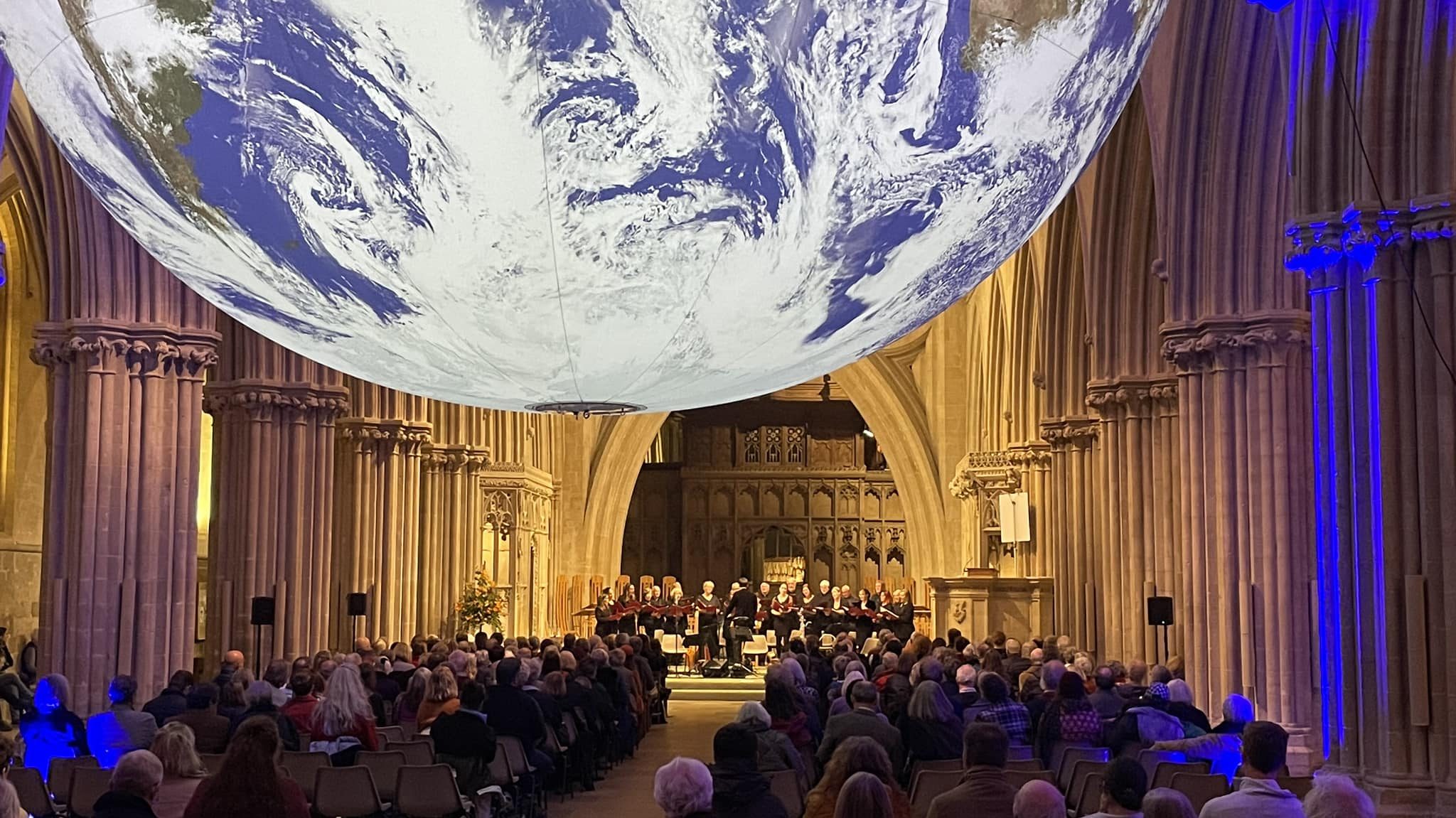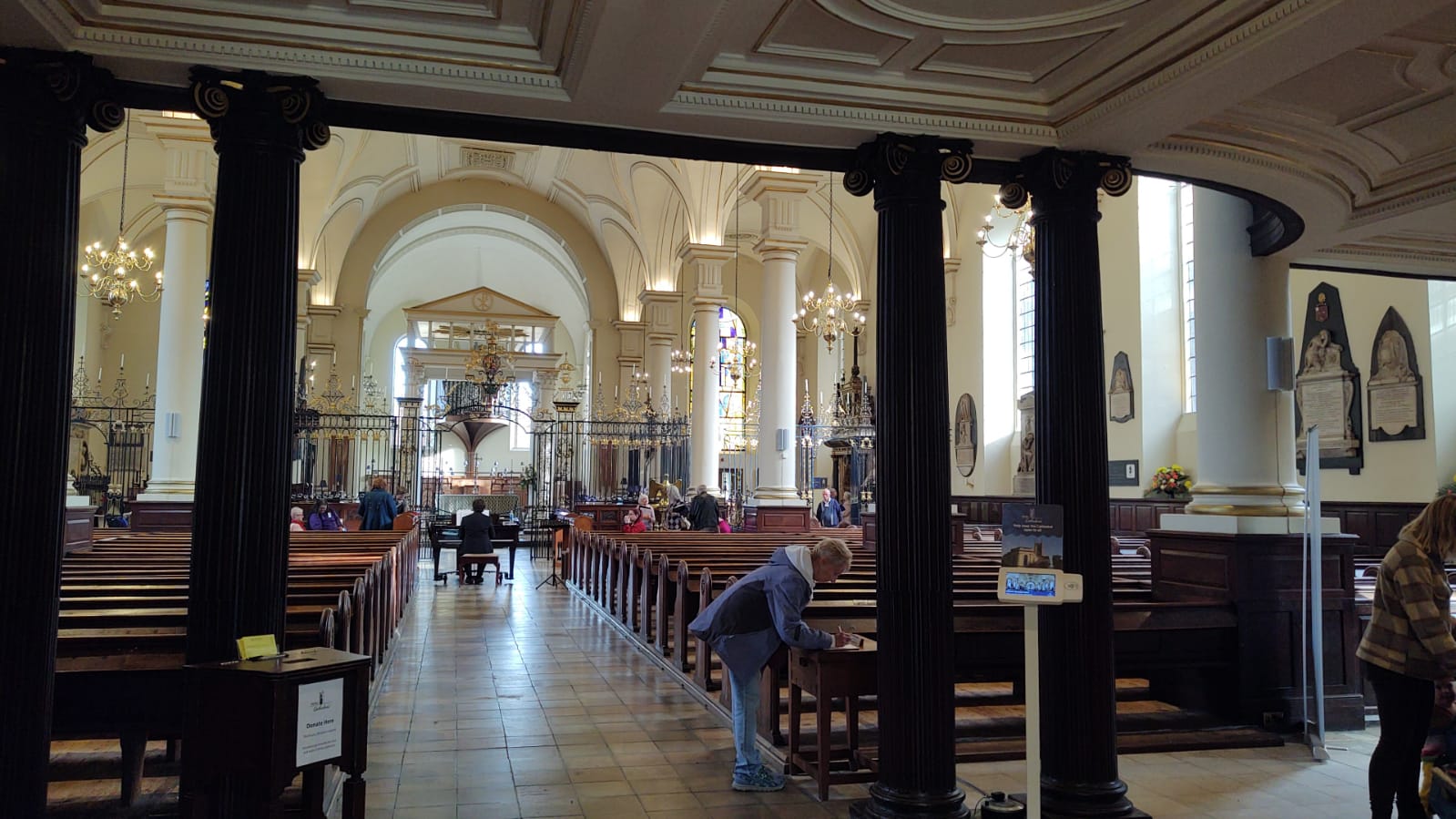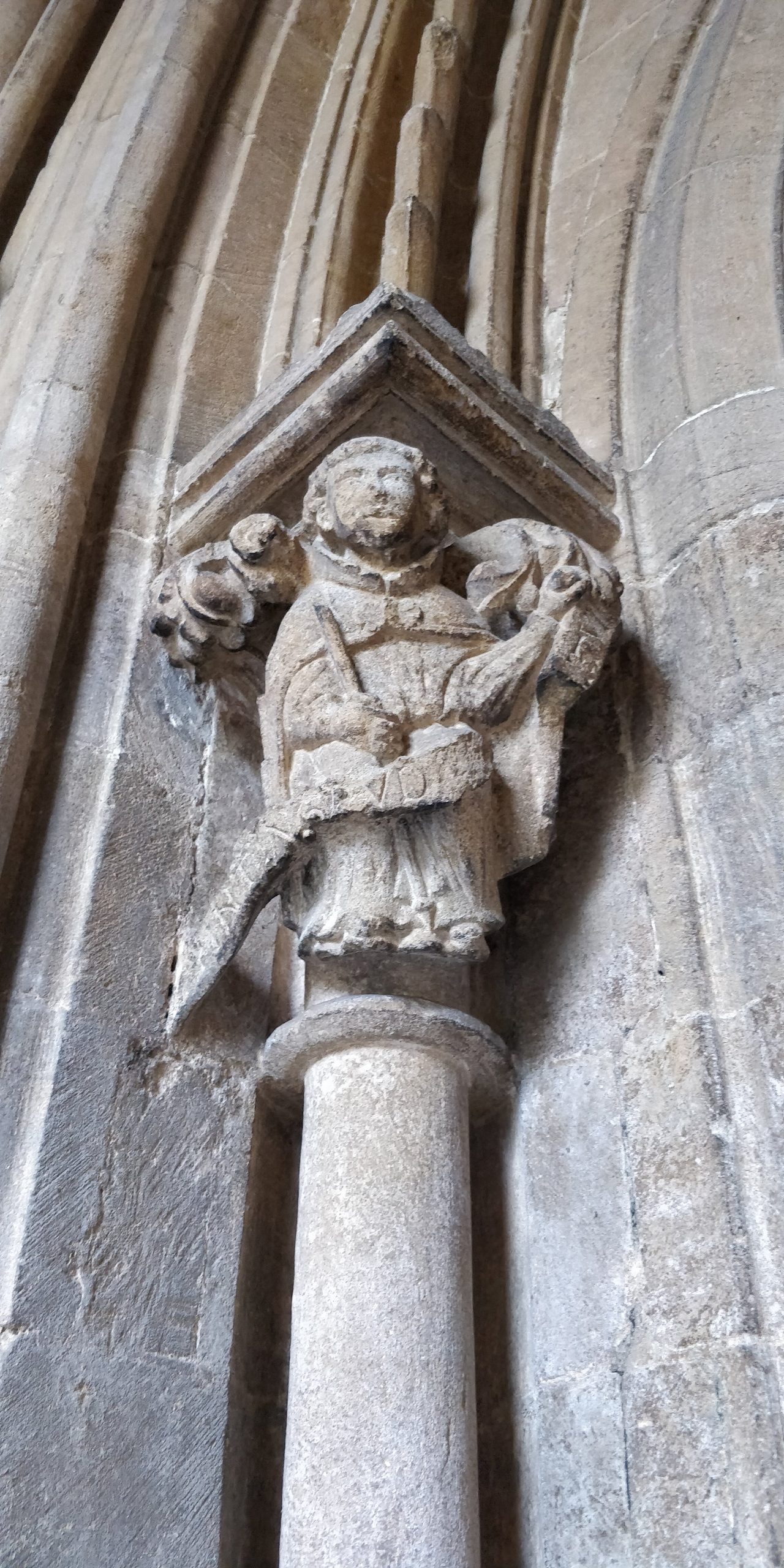The view from Cantoris
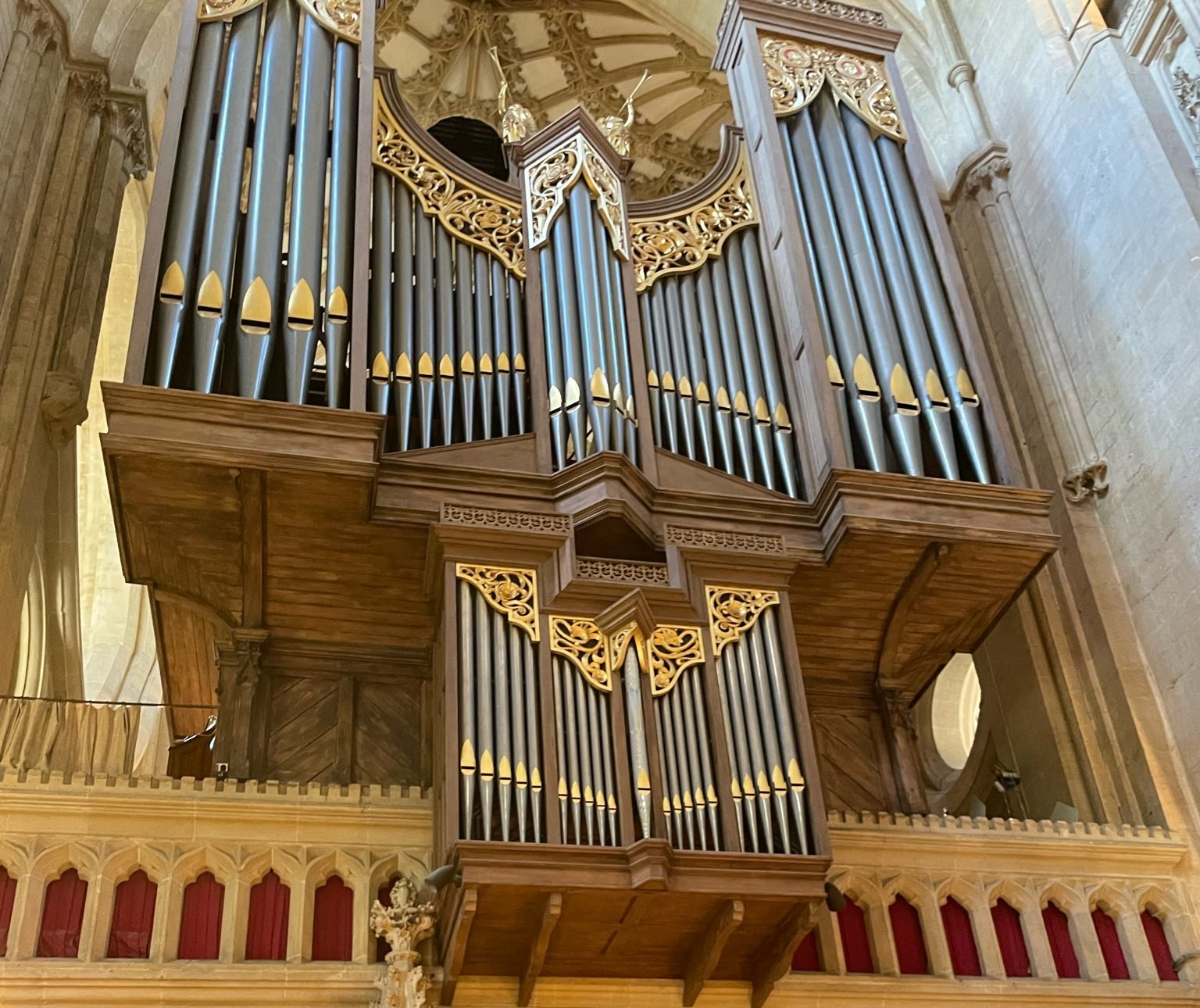
As is the practice in most Anglican cathedrals and choral foundations, the choir sits either side of the central aisle and often sings antiphonally, most notably during the psalms. It is usually (but not always) the case that the Dean sits on the south side, with the Precentor on the north. This arrangement gave the names to the two ‘sides’ of the choir – Decani, of the Dean, and Cantoris. Gentle rivalry between the two helps engender a useful intent to be on the better side.
In the case of the Chamber Choir, Cantoris is easily the finer side, so as a Cantoris bass I am privileged to be able to describe the view from my seat of the 12th century cathedral and the 14th century modifications to the Quire and east end of the cathedral.
By looking through the arches into the south transept it is possible to see where the archways were modified during the modifications – as the cathedral archaeologist has put it, they were ‘bodged’, and no longer line up neatly.
Move one’s gaze to the left i.e. east, the Victorian neo-Gothic stonework, due to Anthony Salvin, which separates the Quire from the Quire Aisles is visible – it replaced a decaying wooden gallery. Opinions vary, but some find the treatment rather fussy – ‘wedding-cake stone’, as one visitor described it.
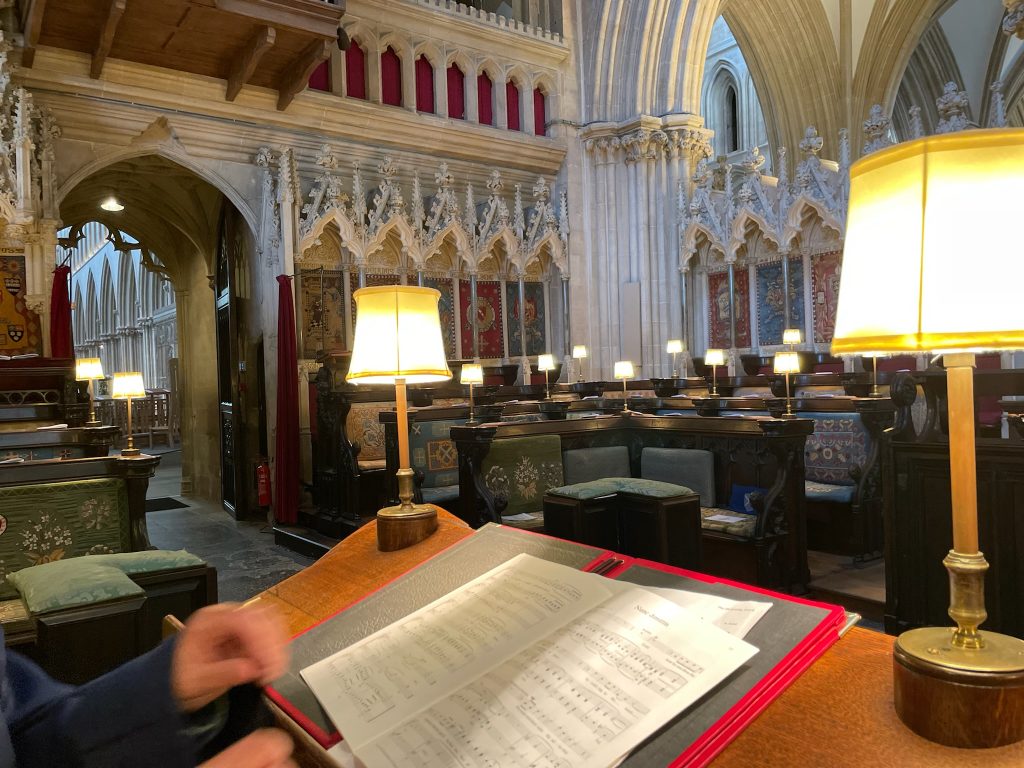
The stonework was made brighter in the mid-20th century by a team of 100 or so seamsters and seamstresses who, under the direction of Alice, Lady Hylton, produced the embroideries which now grace the stalls, depicting the lives of many Bishops of Bath and Wells. Some of those Bishops went on to become Cardinals, and the visitor is encouraged to spot these by the style of headgear.
The cathedral is so named as it hosts the bishop’s throne, or cathedra. This was built, rather grandly, in Bath stone, and stands out from the rest of the stonework.
Allow the eye to drift higher and to the east and one can gaze on the works of Thomas de Witney, Master Mason of the time, in the tierceron vaulting of the retroquire which lies east and beyond the High Altar. The whole vault is supported by delightfully slim pillars, each made of Blue Lias stone with contrast given by shafts of darker Purbeck Marble.

